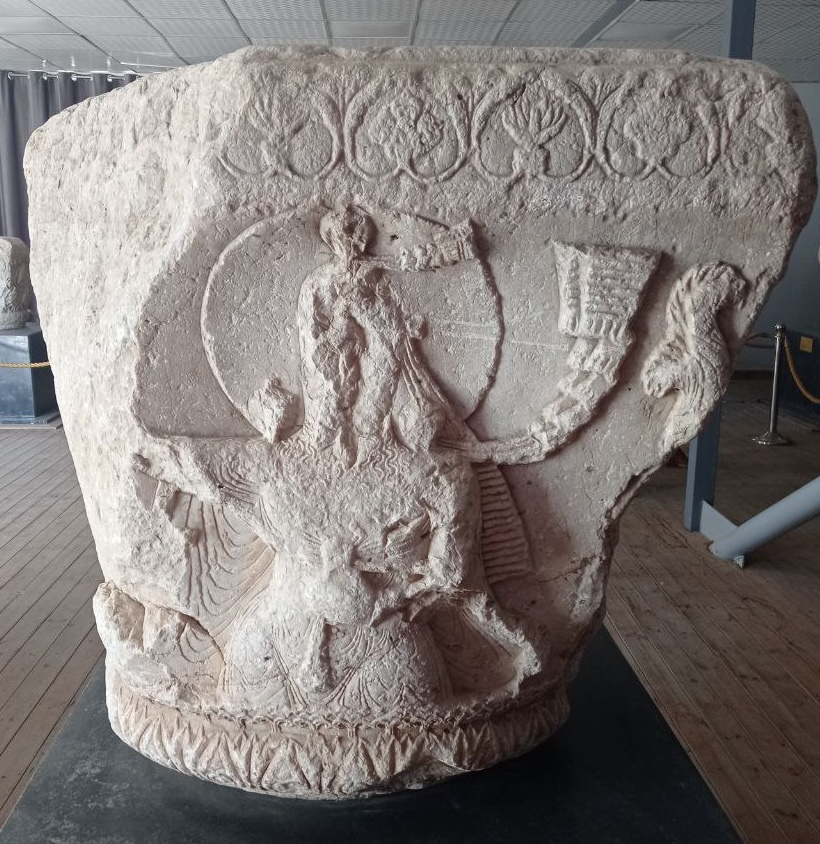Thread: This is an impression of an Akkadian cylinder seal, c. 2217-2193 BC, currently in Louvre Museum. This also is one of the best examples of animal calendar markers I have seen... 

It shows the same scene, a water buffalo licking a jar, held by a kneeling "man", from which water flows in two streams. The scene is depicted twice symmetrically around the inscription that reads "The Divine Sharkalisharri Prince of Akkad"...
So first, what's the meaning of the jar with two streams flowing out of it? The two flowing streams are two great Mesopotamian rivers, Tigris and Euphrates. And the jar is symbolic depiction of their source...
Now the mythological source of Tigris and Euphrates is God of fresh water, known to Sumerians as Enki and to Akkadians as Ea...Actually his penis. Apparently every year, he "stands up like a wild bull, lifts his penis, ejaculates and fills the great rivers with flowing water"...
Which is why Enki is either depicted sitting on his throne, holding a jar from which water flows out in two streams, like on this cylinder seal 

Ok, so what about the buffaloes? Why are they licking the mouth of the water jars? It's all to do with Mesopotamian climate. The climatic year in Mesopotamia is divided into two halves: summer, hot and dry half (Apr/May-Oct/Nov) and winter, cool and wet half (Oct/Nov-Apr/May)... 

The rain that falls everywhere in the Tigris and Euphrates catchment area and snow that falls in the Anatolian highlands and Zagros mountains during the wet season, and subsequent snowmelt, are the real source of the two great rivers...And the life in the region...
The beginning of the rain season in the area (Oct/Nov) is also the beginning of the mating season of the wild water buffaloes. Domesticated buffaloes also breed mostly during the winter... 

So the reason why the water buffalo is depicted licking the jar, symbolic source of Tigris and Euphrates, is because the water buffalo is the animal calendar marker which marks the beginning of winter, the wet season, the real source of Tigris and Euphrates... 

I talked about water buffalo as an animal calendar marker for winter in Mesopotamia already in this thread
https://twitter.com/serbiaireland/status/1358093514458996738
One last thing. The story about ejaculating Enki says: "...Father Enki...he stood up full of lust like a rampant bull, lifted his penis, ejaculated and filled the Tigris with flowing water. He was like a wild cow mooing for its young in the wild grass..." Why?
The rain season in Mesopotamia does start with the mating season of water buffaloes (Oct/Nov). But Tigris and Euphrates reach their peak water level 6 months later, in Apr/May...Pics: water flow charts, L: Tigris, R: Euphrates 



This time of the year, Apr/May, is marked by Taurus, Bull...Why? Because this is the beginning of the calving season of the aurochs, Wild Eurasian cattle...oldeuropeanculture.blogspot.com/2016/05/ram-an… 

Hence Enki, the god of fresh water, was at the moment of his ejaculation, at the moment of his climax, at the moment of the peak water levels in the rivers he fills with his heavenly semen, "like a lustful bull" and "like a wild cow mooing for its young in the wild grass"...
So the wet season, the real source of the two great rivers, starts with buffalo and ends, culminates, with bull... 

• • •
Missing some Tweet in this thread? You can try to
force a refresh
























